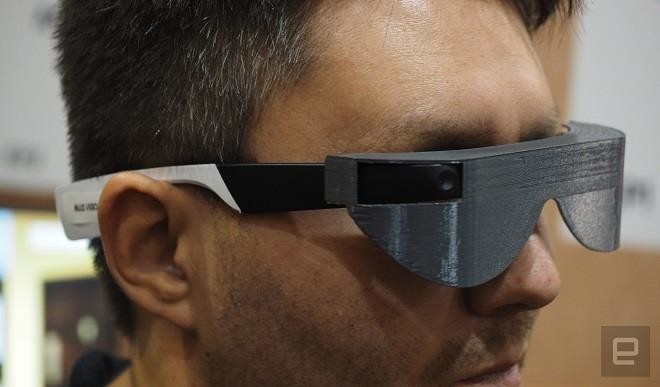Smart glasses enable the blind to see
It is always refreshing when technology does good things for the common man; like letting the blind or almost-blind to see. This is precisely the vision of OxSight, a startup company that grew out of the high tech incubator of Oxford University in the UK. The company has developed augmented reality-enabled smart glasses – called […]


It is always refreshing when technology does good things for the common man; like letting the blind or almost-blind to see. This is precisely the vision of OxSight, a startup company that grew out of the high tech incubator of Oxford University in the UK. The company has developed augmented reality-enabled smart glasses – called Smart Specs – that provide an alternative to canes and seeing eye canine for the blind. The technology was developed at Oxford’s Nuffield Department of Clinical Neuroscience by visual prosthetics researcher Dr. Stephen Hicks with support from the Oxford Eye Hospital. The team employs its understanding of the manner in which the brain interprets visual information to develop algorithms that replicate our natural visual interpretation process.
In the current deployment of the innovation, which will soon be made available to the public, the smart glasses, which utilize an augmented reality display system that lets people with visual issues “see,” only people with some level of sight left in them are supported. The device takes the sight that you still have – be it detection of light, movement or a small amount of shape – and aids you to see more by amplifying it.
According to the World Health Organization, an estimated 285 million people are visually impaired worldwide; out of which 39 million are totally blind and 246 million have low vision. It is the latter category that the current deployment can work for. According to Dr. Stephen Hicks, the founder of the company OxSight, “Smart Specs are aimed at people who retain some central vision, such as those with retinitis pigmentosa, diabetic retinopathy and some forms of glaucoma.” “And if the user is totally blind,” Dr Hicks concluded, “we can turn the image into sound. While it’s not perfect yet, we’re getting closer.”
What happens when a blind person puts on Smart Specs? They are able to locate objects and people, recognize where they are and navigate more easily. They will also be able to avoid colliding with objects, walk confidently at a normal pace and are able to have more meaningful interactions with friends and family. To accomplish this, the device amplifies the level of light, movement, and object detection that you see.
Wearing the spectacles is considered to be as straightforward as putting on a pair of reading glasses. As Dr. Hicks points out, “A lot of these technologies to help people who are blind require a huge amount of learning, like trying to understand the world around them as a sense of sound. That’s just a complex thing that is really difficult. In short, “you can see the world as you normally do, while having an aura on certain types of objects, which, say in the dark, are really handy for recognizing a doorway or an obstacle, or say something you want to avoid.” Current partners of OxSight include Google, the Royal National Institute of Blind People, the University of Oxford, the Royal Academy of Engineering, and Oxford University Innovation.
This is how the developers describe the technology behind the innovation: “Behind these glasses is ten years of work developing a real-time computer vision algorithm that mimics some of the basic components of human visual perception. The algorithm detects the distance to nearby objects and forms a depth-map which is then enhanced and displayed on the inside of a pair of glasses. It highlights edges and features which make many objects easier to see, especially in low light where many people struggle.” Feature-wise, current versions of OxSight’s smart glasses allow you to zoom in, change contrast and choose between a simple white highlight of objects and obstacles, through to enhanced edges and contrast, a cartoonized filter that can improve face detection, and, finally, a bright and colorful image. “The images are displayed on transparent lenses, allowing the wearer to use their vision as normal while still seeing an enhanced overlay. Other people can still see the wearer’s eyes, which helps in social situations.”
OxSight isn’t the only tech innovation out there that’s trying to help the blind to see. The company Colorophone, based at the Norwegian University of Science and Technology in Trondheim, is developing a system comprising of glasses, a camera and an ultrasonic distance sensor. With the device you can scan the scene in front of you by moving your head. Information from the camera and distance sensor is processed, converted into frequencies corresponding to a particular color and delivered via bone conductive headphones so as not to block out surrounding sounds. “After only two minutes, 98% of users could distinguish between 16 colors.” It seems in today’s world we can’t do much without technology.
